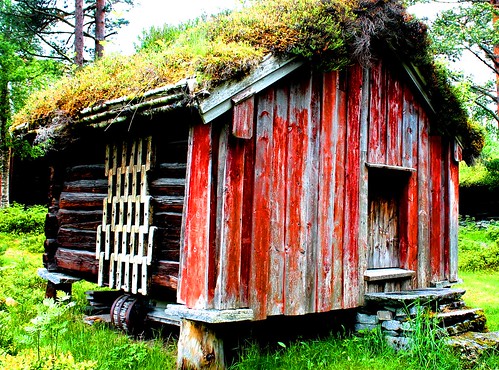By Guest Author Michael Sullivan
After twenty-five years in construction I had worked my last days at a steady job in December of 2008. At a time when tens of thousands of other workers in construction were also laid off, it was time for me to make a change. The days of people wanting to flaunt their wealth by building opulent homes of exaggerated size for the number of people living in them was coming to an end.
 At the same time a cable television show called “Blog Cabin” (airing on the DIY channel) was experiencing a very successful show that combined the actual construction of a luxury cabin with advise from viewers submitted via the shows blog on their website. As I had found the demand for large trophy homes was diminishing the producers of Blog cabin were coming to the same conclusion. The show had built a community of bloggers who not only gave their suggestions on what color paint to use or what choice of tile was best, but had become intertwined in each others lives. When one community member got sick others raised concern on the blog while the shows producers disregarded these comment and were focused more on what benefited the show.
At the same time a cable television show called “Blog Cabin” (airing on the DIY channel) was experiencing a very successful show that combined the actual construction of a luxury cabin with advise from viewers submitted via the shows blog on their website. As I had found the demand for large trophy homes was diminishing the producers of Blog cabin were coming to the same conclusion. The show had built a community of bloggers who not only gave their suggestions on what color paint to use or what choice of tile was best, but had become intertwined in each others lives. When one community member got sick others raised concern on the blog while the shows producers disregarded these comment and were focused more on what benefited the show.The producers of blog cabin were using the web 2.0 platform [which specific platform? that is quite a general term…] to generate more profit for the show’s website as well as the television show. The website gathered information from viewers as they registered for the website, accumulating this information and shared with advertisers on their website and cable broadcast.
It seems the shows producers were exploiting their viewers by taking their suggestions and comments and incorporating them into the show more than their own writers contributed. One of the main draws for people to get involved in the blogging process for Blog Cabin was that all those who contributed to the house would be eligible for a drawing at a chance to win the house being built. This enticement had given the fans concern of the cost of owning the home if they were to win it. The value of the cabin being built in 2008 was at 750,000 dollars. This home would be taxed as income and with state and federal taxes the viewers had estimated the taxes to be about $250,000; most admitted they could not keep the cabin if they won it. The bloggers by now had become a close community and had gotten to know each other through their posts and had become known as “The Off-Site Build Team”. The Team had started making request for the show to build an more affordable home where the winner would stand a better chance of keeping it if won by one of them. The producers failed to reply with affordable building plan options for the viewers to choose from and limited them to more grandiose home plans. The fans were unable to get other accommodations from the producers such as a plaque for a member of their community suffering from cancer.
This article makes the case that the contributors to the Blog Cabin show were being exploited and their input and ideas were being used on the show and building of the cabin and they got little too no considerations from the producers of the show. As the community of bloggers had shared hardships and triumphs within their own lives, the show had only sought to get the information needed for advertisers and to complete a successful show.
Robert W. Gehl and Timothy A. Gibson (2012). Building a Blog Cabin during a Financial Crisis: Circuits of Struggle in the Digital Enclosure. Television & New Media 2012 13: 48-67.